L.Opdyke French Aeroplanes Before the Great War (Schiffer)
Deleted by request of (c)Schiffer Publishing
HF 14?: Similar in design to the Type 6, it had the high rounded tailplane and single oval rudder which were to appear on many subsequent Farman aircraft. One was photographed with 4 passengers squashed in behind the pilot. This 2-seater saw military use, and was privately raced as well. One of these 1912 machines fitted with twin floats and a tail float flew at Deauville on 28 August 1913. In another in November 1913 Chevillard was the first to loop a biplane.
(Span: 13.75 m; length: 8.36 m; 80 hp Gnome)
Jane's All The World Aircraft 1913
FARMAN. Henry and Maurice Farman, 167, Rue de Silly, Billancourt (Seine) Aerodromes: Buc, pres Versailles and Etampes. Depots: Camp de Chalons--Reims. Established by H. Farman in 1908. M. Farman established works a little later. In 1912 the two brothers combined. The present works were opened in January, 1912, and had an output capacity of at least 300 machines a year in March, 1913.
H. Farman. H. Farman. H. Farman. H. Farman
Military. Single- 2-seater 2-seater
2 or 3- seater. monoplane. special
seater. Military. hydro-
1912-13. 1913. biplane.
Biplane. Biplane.
Length....feet(m.) 26? (8) 24? (7.35) 24? (7.50) 26 (7.90)
Span......feet(m.) 42? (18.25) 31-1/3 (9.5) 32? (10) 45 (13.70)
Area...sq.ft.(m?.) 376 (35) 161 (15) 204 (19) 344 (32)
Weight,total...
.. ...lbs. (kgs.) 793 (360) 640 (295) 628 (285) 950 (431)
Weight...
......lbs. (kgs.) 661 (300) 386 (175) ... ...
Motor.........h.p. 70-80 Gnome 70-80 Gnome Designed for 50 Gnome
Gnomes from 40
up to 160 h.p.
Speed, max...
.......m.p.h.(km) 65 (105) 71 (15) ... 52 (100)
Speed, min...
.......m.p.h.(km) ... ... ... ...
Endura........hrs. 3 ... ... ...
Number built
during 1912 ... ... ... ...
Remarks.--The whole of the above can easily be converted into hydro-avions --two long narrow floats without steps. H. Farmans are of wood and steel construction; M. Farman, wood. In all 1913 biplanes the ailerons are inter-connected. All 1913 machines designed to carry one or in some cases two mitrailleuse, and special attention is paid to facility for taking down for transport and re-assembling. The 1911-12 H. Farmans had elevators forward, were a good deal longer, and had more surface than 1913 models. Ailerons not inter-connected. The M. Farmans generally as now, except that all planes, etc., had rounded edges. On September 11th, 1912, Foury, in an M. Farman military, made world's endurance record to date, 13 hrs. 22 min., covering 631 miles (1,017 km.) All models of this type, also the "big military," are fitted with the Doutre stabiliser. Fabric: "Aviator" Ramie.
J.Forsgren Swedish Military Aircraft 1911-1926 (A Centennial Perspective on Great War Airplanes 68)
Farman HF 23 (also SW 11)
The most numerous type of airplane in MFV service during the Great War was the Farman HF 23, with a total of 11 being used. Some of the HF 23’s were fitted with a double set of controls, being utilized for primary flight training, with their long endurance also making them suitable for maritime patrols. By 1917/18, the delivery of Thulin G’s resulted in the Farman HF 23’s being largely withdrawn from frontline service. Nevertheless, the last HF 23’s were not struck off charge until October 1920, with one, serial number F III, having accumulated more than 260 hours in the air.
In 1913, one HF 23 was purchased from France, using funds from the Bjorkquist National Defense Collection. One additional HF 23 was obtained secondhand from France prior to the start of the war. A total of seven HF 23 s were built under licence at Sodertelge Verkstader, being known as the SW 11. One of these, serial number F VI, was donated in January 1915 by the famous artist Anders Zorn. Two additional aircraft were assembled by the naval yard in Stockholm, using spares and parts crashed airplanes. On January 8, 1915, the naval yard received an order for one Farman fuselage gondola, to be fitted with a double set of controls.
During the war, the MFV HF 23’s were used for patrolling the long Swedish coastline, searching for foreign ships and airplanes which might cross into Swedish territorial waters. During one such patrol in February 1915, Hugo Sundstedt and Fritz Netzler spotted two ships from the Imperial Navy Hochsee fleet: ’’They are steering toward the Swedish land, appearing to be in an awful hurry. I point them out to Sundstedt, and he nods and turn to port to cut them off. I wonder what they’re up to, but when I’m standing up, behind the port float, I spot a schooner close to shore. So that’s the reason for the behavior of the Germans.
Both destroyers were close to the neutrality border - and yet they careened on in the most cheeky manner. This is almost too much!
I strike Sundstedt’s back, and give the sign for ’gliding flight’. At the same moment, some signals head up the mast of the first destroyer, and a few seconds later, both of them make an elegant port turn, heading south.
Sundstedt turns and smiles happily: ’You see them! They appear to have forgotten something back home’. Yes, so it seems, but just to be on the safe side, we’ll fly close to them for a while. With our flying boat turning around the destroyers masts, the officers and crew greet us with a strict German salute.
We then fly on for a while, and then all of a sudden, it happens. The carburettor - it can’t possibly be of German manufacture, can it? Appears to be less than pleased with us, rumbling off.
I had no choice other than lay on top of the fuel tank and keep the carburettor in place with my bare hands.
It wasn’t a particularly nice job at minus 15 degrees Centigrade, and in an airplane that behaved like a crow with shot-out wings. As if this wasn’t enough, we head straight into heavy snow, which makes navigation difficult. We are flying over the fortifications near Karlskrona, being close to shore. But the sea beneath us! It blows sticks and straws down there.
I feel happy that we nevertheless are safe, when at the same moment, our ’Farman-Coach’ starts behaving in a very strange way.
The crate twists and turns almost like a harbor sailor from the old days. Sundstedt takes a look around, and I grab hold in anything within reach so that I won’t have to ’get off’ before we’ve landed. Then Sundstedt reduces the engine rpm, and says calm as ever: ’Perhaps you can get hold of the control fine?’
But before I’ve managed to out on the wing in my Lunkentuss-boots, the port control line has disappeared to the rear. It has twisted off in the cold weather. At the same moment, Sundstedt put the machine 'on the nose’, and I had to keep on, riding backwards lying on the wing.
In a shallow starboard turn, we would be able to get down in one piece, if Sundstedt could fly straight into the wind. This was successful, and we’re splashing away on the water surface about a mile away from the base. The landing was rough, but we were safe.”
Farman HF 23 (SW 11) Technical Data and Performance Characteristics
Engine: 1 x 90 h.p. Thulin A
Length: 8,89 m
Wingspan: 18,08 m
Height: 3,55 m
Wing area: 35,00 m2
Empty weight: n/a
Maximum weight: 850 kg
Maximum speed: 90 km/h
Armament: -
Журнал Flight
Flight, November 2, 1912.
THE PARIS AERO SALON.
Henry and Maurice Farman.
THEIR workmanship is excellent, and their designs too. The brother Maurice has on his stand a biplane similar in nearly every respect to those that are handled in England by the Aircraft Manufacturing Co., Ltd., of Hendon, and flown by Verrier. It only differs in two points, a more elaborate and highly finished nacelle is fitted, presumably because it is Show time, and the rear part of the landing skids are bent downwards to pull the machine up quickly on landing. These two points we illustrate.
Henry Farman's hydro-biplane is easily the prettiest machine of its type in the Salon. It looks good and it is good. And the workmanship throughout would stand examination through a microscope. It maintains the same lines as the biplane of his that we reviewed in these columns a week or two ago, but it is considerably smaller, and is fitted with a Gnome engine of only 50-h.p. It is indeed an efficient machine if it succeeds in lifting two persons clear of the water with an engine of such low horsepower. The floats, constructed by Tellier, are just plain narrow pontoons with no step in them, and for them it is claimed that they are considerably more effective in rough seas than those of the wider and shorter variety. Each float is connected to the body of the machine by two simple steel struts, and held rigidly in position by steel bracing. The chassis is not so high and of course considerably stronger than his earlier ones. Two little port and starboard lights are provided, for they are essential, if the machine is going to be kept out on her moorings all night. Inside the body the pilot and passenger can make themselves as comfortable as they could in their own club's smoking-room. All the upholstery is of leather, and a floor covering of thick carpet complete the snug appearance.
Sitting in front, the passenger has a magnificent view all around him. Before him in this particular machine is mounted a mitrailleuse. Behind sits the pilot controlling the machine with a lever, not such as were fitted to Farman's a year or two back, but a thoroughly neat one, with all its wire connections tucked away inside its mounting out of the way. On a little dashboard in front of him are all his instruments and a pad on which he can scribble down notes.
Contrary to Henry Farman's early practice, the ailerons, which are of large aspect ratio and fitted to the top plane only, are interconnected, so that when one is pulled down the other one rises.
Flight, March 14, 1914.
WHAT THERE WILL BE TO SEE AT OLYMPIA.
THE EXHIBITS.
Farman (The Aircraft Manufacturing- Co., Ltd.) (41.)
WILL show two machines of exceptional interest, inasmuch as neither of them have previously been shown in public in this country. One of these machines will be a H. Farman hydro., mainly interesting on account of the ingenious way in which the floats are sprung in order to minimise shock on alighting. In its general arrangement this machine will be similar to its predecessors which have already established such an excellent reputation for the Farman firm in this country and abroad, but several detail innovations will be found to have been incorporated in its construction.
<...>
Two complete nacelles, one H. Farman and one M. Farman, will complete this exhibit.
Flight, March 21, 1914.
THE OLYMPIA EXHIBITION.
THE EXHIBITS.
FARMAN (AIRCRAFT MANUFACTURING CO.), LTD. (41.)
ON this stand are shown two complete machines, one Henry Farman seaplane and a Maurice Farman land machine.
The 80 h.p. Henry Farman Seaplane follows general Henry Farman practice as regards its wings, nacelle and tail-planes, but in the chassis and float attachments numerous improvements have been effected. The main floats, of which there are two, are of the plain non-stepped type, and are sprung by rubber shock absorbers in the manner shown by the accompanying sketches. Each float is allowed to move up or down independently of the other, and also to rock slightly round its longitudinal axis, thus providing great flexibility, and minimising very considerably the shock of alighting. A single tail float of the same type as the main floats supports the tail planes when the machine is at rest.
An inspection of the interior of the nacelle reveals a lot of interesting instruments not usually fitted on the land machines, such as a wireless installation (Rouzet system). This apparatus when demonstrated never fails to attract a crowd of interested onlookers. The engine, an 80 h. p. Gnome, can be started from the passenger's seat by means of a starting handle passing through the petrol tank.
The pilot's and passenger's seats are arranged tandem fashion, and are mounted on a very roomy tool-box. The passenger occupies the rear seat, on which is mounted the transmitting key of the wireless apparatus. The rest of the machine, as has been already said, follows standard practice, and is so well known that a detailed description of it is unnecessary.
<...>
In addition to the two complete machines just described, there are shown on this stand two nacelles, one Henry and one Maurice Farman, and various excellent examples of acetylene weilding, sockets, finished parts, and model patterns of tanks, which, like the complete machines, bear evidence of the high-class workmanship which has established such an enviable reputation for this firm. Quite an interesting item in the exhibits on this stand is one of the original Fabre floats used on the first hydroplane to fly over water on March 28th, 1910. It will be remembered that the Aircraft Manufacturing Co. are sole agents for these floats.
Flight, May 2, 1914.
THE HENRY FARMAN SEAPLANE,
OF the difficulties which confront the designer of waterplanes none is perhaps greater than that of making adequate provision for the absorption of shocks due to alighting on the surface of the water. A study of some of the most successful waterplanes appears to indicate that the systems employed by designers fall into three categories. One type is characterized by flat-bottomed floats flexibly suspended from the chassis, another has rigidly mounted floats with either "V" shaped or rounded bottoms, which serve to lessen the shock when alighting, since they allow the float to sink partly into the water, thus gradually taking the load as the amount of displacement is increased, while the third type is in reality a combination of the other two, having floats with rounded or "V" shaped bottoms flexibly mounted. It will be readily seen that in the third type a form of progressive springing may be obtained by suitably proportioning the shape of the float bottom and the flexibility of the shock absorbers. It is too early yet to venture an opinion as to which type will ultimately survive, but the method of springing the floats in the Henry Farman seaplane, which belongs to the first-mentioned type, is so ingenious as to entitle this machine to special attention on that account only, apart from any other merits it may possess.
The machine itself differs in detail only from the land machines of the same make, which are already familiar to our readers, such alterations as have been effected being more in the nature of detail improvements and general dimensions; as an aeroplane the machine remains unaltered. One of the characteristics of the Henry Farman biplane that has been retained in this machine is the comparatively small gap between the planes. This is all the more noticeable on account of the increased span of the upper plane, which has an even greater overhang than that of the land machines. The reason for increasing the span is no doubt that, in order to carry the extra weight of the floats, and still keep the loading reasonably low, greater area is required, and also the extra resistance on the upper plane helps to counteract the added resistance of the floats over that of the land chassis.
As in the land machines, compensated ailerons of large area are fitted to the upper plane extensions, and are operated by the usual Farman type control lever, whilst the balanced rudder is actuated by a pivoted foot bar. The pilot's and observer's seats, which are of the bucket type, and made of aluminium, are arranged tandem fashion on a long tool box. Behind the passenger's seat is a starting handle as shown in one of the accompanying sketches, and the back rest of the seat is pivoted at one end so that it may be swung upwards out of the way to provide clearance for the starting handle.
The petrol and oil tanks are mounted on transverse steel tubes resting on the upper longerons of the nacelle, thus ensuring a free flow of petrol from the tank to the carburetor in all ordinary positions of the machine. An interesting point in connection with the construction of the nacelle is the employment of steel-tube longerons in the front portion. This method of construction has the advantage, amongst others, that there is no wood to splinter and injure the pilot in case of a smash. In the rear portion of the nacelle, where they serve as supports for the engine bearers, the longerons are of wood, thus lessening the vibration. The engine - an 80 h.p. Gnome - is mounted on overhung bearings, and sufficient clearance is provided for the propeller by cutting away part of the trailing edge of the upper plane.
The two main floats, which are of the plain non-stepped type, are supported each on two telescopic steel tubes carrying cross-pieces that serve as anchorage for the rubber shock absorbers. The telescopic tubes are provided with universal joints at both ends to allow of the free movement of the floats. From the upper cross-piece, which is welded to the lower telescopic tube, wires are taken to the gunwales of the floats. These wires have incorporated in them small coil springs enclosed in metal casings, as shown in the accompanying sketch, so that the floats are free to oscillate slightly around their longitudinal axis.
Oblique transverse tubes run from the inner gunwales of the floats to a central tubular structure coming down from the nacelle. These tubes are attached to the structure by means of a hinged joint, whilst their attachment to the floats is by means of a ball-and-socket joint in order to allow of the upward travel of the float. The object of the hinged joint at the point of attachment to the central structure is to allow the outer ends of the tubes to travel upwards with the float whilst at the same time preventing the tubes from turning broadside on.
It will thus be seen that each float is capable of three separate movements, i.e., it can move upwards and downwards bodily, it can rock slightly round its longitudinal axis, and, finally, as both front and rear chassis struts are provided with shock absorbers, the float can oscillate round its transverse axis. Under actual working conditions the movements of the floats are of course combinations of the three above-mentioned movements of which the floats are capable. The flexibility of this arrangement is enormous as each float can adapt itself independently of the other to the unevenness of a rough sea.
A small float supported on four steel tubes takes the weight of the tail planes when the machine is at rest on the surface of the sea. The workmanship in the Farman machines already enjoys such an excellent reputation that it is unnecessary to enlarge upon it here - suffice it to say that, in the machine described, the workmanship is well up to the usual high standard maintained by the Aircraft Manufacturing Co.
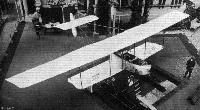 |
Журнал - Flight за 1912 г.
|
| A novel way of exhibiting a hydro-aeroplane. Henry Farman's machine resting in its turf-edged water tank.
|
 |
L.Opdyke - French Aeroplanes Before the Great War /Schiffer/
|
| The 1912 HF 14 as a hydro at Deauville, in 1913.
|
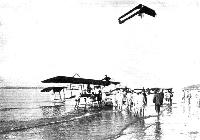 |
Журнал - Flight за 1913 г.
|
| AT DEAUVILLE. - Commandant Felix flying on the Dunne biplane over the sands. Below in the foreground is a Henry Farman waterplane. and in the distance other waterplanes taking part in the French Government Waterplane Trials.
|
 |
P.Lewis - British Racing and Record-breaking Aircraft /Putnam/
|
| Claude Grahame-White with his Farman hydro-biplane which he flew on 24 July, 1912, to beat Harry Preston's motor-boat My Lady Molly in a race between Brighton and Have.
|
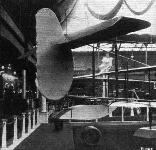 |
Журнал - Flight за 1914 г.
|
| Tail planes and float of H. Farman seaplane.
|
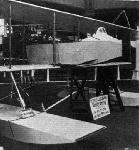 |
Журнал - Flight за 1914 г.
|
| Nacelle and chassis of H. Farman seaplane.
|
 |
J.Davilla - Italian Aviation in the First World War. Vol.2: Aircraft A-H /Centennial Perspective/ (74)
|
| Italian Farman M.F.11 (???) floatplane being hoisted aboard a ship.
|
 |
J.Forsgren - Swedish Military Aircraft 1911-1926 /Centennial Perspective/ (68)
|
| During the early stages of the Great War, the Farman HF 23’s were the MFV’s most numerous type of airplane, being heavily used for maritime reconnaissance. Via Arlanda Flygsamlingar
|
 |
J.Forsgren - Swedish Military Aircraft 1911-1926 /Centennial Perspective/ (68)
|
| A moored MFV Farman HF 23 under the gaze of curious locals. Via Arlanda Flygsamlingar
|
 |
J.Forsgren - Swedish Military Aircraft 1911-1926 /Centennial Perspective/ (68)
|
| Lieutenant Fritz Netzler demonstrating a Farman HF 23 to Prince Wilhelm in 1917. Via www.digitaltmuseum.se
|
 |
J.Forsgren - Swedish Military Aircraft 1911-1926 /Centennial Perspective/ (68)
|
| During the winters, the MFV Farman HF 23’s were usually flown on wheels. The exact purpose of the pair of vertical tubes fitted to the side of the fuselage is unclear, but may have been used for bomb dropping trials. Via Arlanda Flygsamlingar
|
 |
Журнал - Flight за 1912 г.
|
|
|
 |
Журнал - Flight за 1914 г.
|
| The 80 h.p. H. Farman seaplane.
|
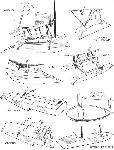 |
Журнал - Flight за 1912 г.
|
| Some of the types of float used on present-day hydro-aeroplanes, as seen at the Paris Aero Salon.
|
 |
Журнал - Flight за 1914 г.
|
| One of the main floats with its attachment on the H. Farman seaplane, and on right the tail float.
|
 |
Журнал - Flight за 1914 г.
|
| Detailed sketch showing method of springing on H. Farman seaplane.
|
 |
Журнал - Flight за 1914 г.
|
| Left, the coil springs incorporated in chassis stay wires on Henry Farman seaplane. Centre, the leaf spring skid on the heel of the main skid of the M. Farman. On right, a neat steel clip which takes the place of the usual chain link on the Farman.
|
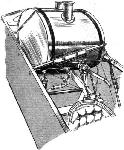 |
Журнал - Flight за 1914 г.
|
| Sketch showing starting handle and petrol tank mounting on H. Farman seaplane.
|
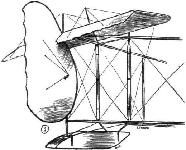 |
Журнал - Flight за 1914 г.
|
| Tail planes and float of H. Farman seaplane.
|
 |
Журнал - Flight за 1913 г.
|
| HYDRO-AEROPLANES. - Fig. 5. - Types of Aeroplanes.
|
 |
O.Thetford - British Naval Aircraft since 1912 /Putnam/
|
| Henri Farman F.22
|
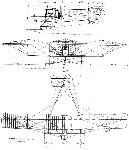 |
Jane's All The World Aircraft 1919 /Jane's/
|
| H. Farman "F-22" Hydro.
|
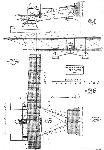 |
Журнал - Flight за 1914 г.
|
| H. FARMAN SEAPLANE. - Plan, side and front elevations to scale.
|
























